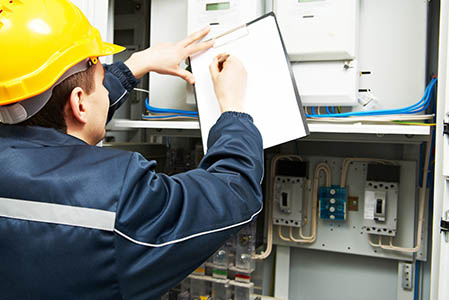Electrical Services Flat Rate Pricing

By: Dave Varga | Jun 03, 2020
Correctly operating an electrical service business will require you have skilled, personable, service technicians, a real live person to answer the phone, and a pricing system that covers all of your operating costs while generating profits! It’s time to throw out the old Time & Material (T&M) billing method and start charging by the Flat Rate. Let’s take a look at both:
Time & Material Billing (T&M)
In the past, and in some cases today, the old trusty Time & Material (T&M) Billing method has worked just fine. This low risk, low reward system typically has a set hourly rate, a one-time trip charge, and a list of common electrical items marked up on a sliding scale. An hourly rate could be $75 an hour, a trip charge of $35, and parts marked up similar to this: $1 to $49 parts marked up 300%, $50 to $100 parts marked up 200%, and so on. This system requires the electrician to accurately list all of the materials used and track all of the hours on the job for invoicing. In some situations, the T&M billing works just fine and should always be set up and available to use. Most maintenance type companies will require an electrical service company to have an hourly rate and an agreed upon materials markup percentage in order to do business with them. One of the biggest disadvantages of the T&M billing is that a company cannot capitalize on their experienced, efficient electricians.
Flat Rate Pricing
Today many service industries use Flat Rate Pricing including plumbers, heating and air conditioning folks, and even auto mechanics. This system could be considered high risk, high reward because once the services and price are agreed upon, the technician has a predetermined amount of time and materials to get the job done. Top electrical service companies and franchised electrical service companies use the flat rate, sometimes called menu pricing. Basically, the flat rate is a single price for an electrical task and that single price includes all labor and materials. The flat rate presented to the customer includes an hourly rate (usually about $100 an hour) that is multiplied by the predetermined hours needed to complete that type of job and the trip charge, materials, and mark ups.
Flat rate pricing system software requires you to initially enter your company’s overhead costs – everything from payroll rates with burden all the way down to basic office expenses. Once all of this information is entered into the software, it will give you an hourly rate to charge based on your costs and with a profit margin set by your company. Next, select the mark up percentages you would like on your materials, permitting, trip charge, rentals, ladder fees, and other services. The software will now have all of the information needed to present a comprehensive flat rate pricing book and can usually be put into a convenient digital format. Now you have pricing that has the proper mark up.
Used correctly, this flat rate is going to make the company some real profits! There are many advantages to the flat rate pricing. One advantage is the ease of the sale as the technician presents “up front pricing” – no waiting until the job is done to know exactly what to pay – which customers really like. Another advantage is the opportunity to present various upsells which can significantly increase profits.
This pricing system will require a company to properly train their technicians to know how to use it and part of that training is upselling. This system works very well with an experienced and knowledgeable technician because that person can usually get the job done quicker – beating the set hourly estimated time in the flat rate price and making the company more money. Typically, electrical service companies can see 30 to 50% profits on their daily service tickets.
Know the Code
Part of each flat rate task is the predetermined hours and the materials needed to complete the task. The technician will have access to this hidden detailed information and must also be familiar with the National Electrical Code so he/she will know when to add additional items like TR receptacles, CO/LAR devices, arc fault breakers, correct wire type, and more. Know the code and become a top technician with the help of www.jadelearning.com

